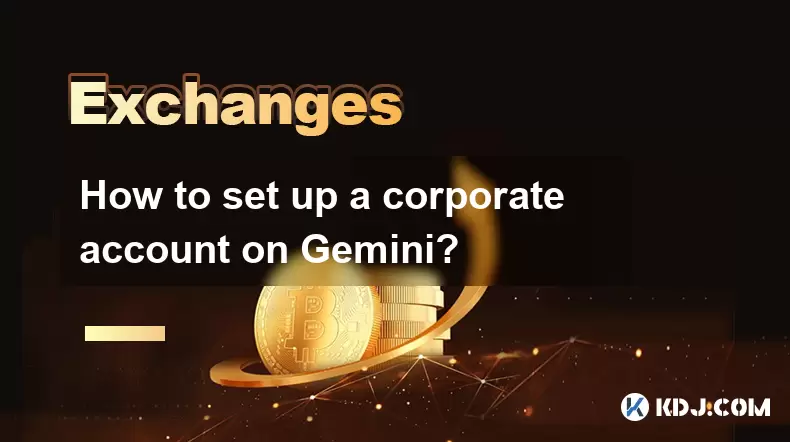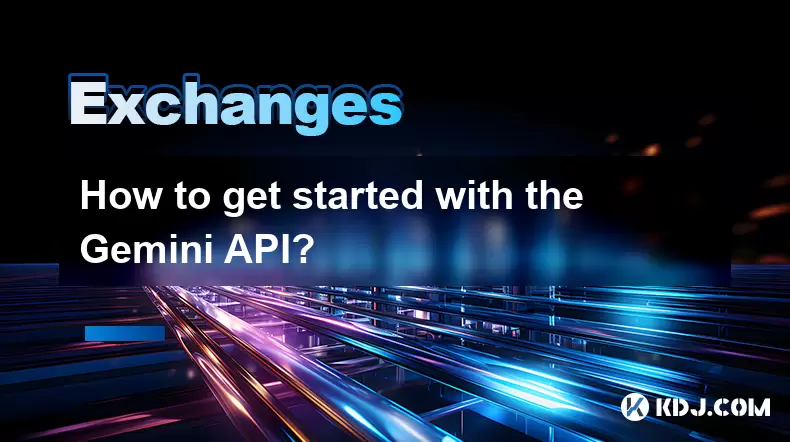-
 Bitcoin
Bitcoin $115000
0.12% -
 Ethereum
Ethereum $3701
4.50% -
 XRP
XRP $3.081
2.99% -
 Tether USDt
Tether USDt $0.0000
-0.01% -
 BNB
BNB $767.9
1.45% -
 Solana
Solana $169.5
3.13% -
 USDC
USDC $0.9999
0.01% -
 Dogecoin
Dogecoin $0.2106
4.30% -
 TRON
TRON $0.3334
1.62% -
 Cardano
Cardano $0.7564
2.54% -
 Stellar
Stellar $0.4165
0.76% -
 Hyperliquid
Hyperliquid $38.75
0.25% -
 Sui
Sui $3.593
3.00% -
 Chainlink
Chainlink $17.08
3.59% -
 Bitcoin Cash
Bitcoin Cash $573.6
4.35% -
 Hedera
Hedera $0.2508
-0.84% -
 Avalanche
Avalanche $23.07
6.46% -
 Ethena USDe
Ethena USDe $1.001
-0.02% -
 Litecoin
Litecoin $120.8
8.17% -
 UNUS SED LEO
UNUS SED LEO $8.943
-0.32% -
 Toncoin
Toncoin $3.400
-5.60% -
 Shiba Inu
Shiba Inu $0.00001255
1.54% -
 Uniswap
Uniswap $9.908
6.32% -
 Polkadot
Polkadot $3.718
2.10% -
 Monero
Monero $303.0
-0.74% -
 Dai
Dai $0.9999
-0.02% -
 Bitget Token
Bitget Token $4.392
0.91% -
 Cronos
Cronos $0.1403
6.31% -
 Pepe
Pepe $0.00001076
1.13% -
 Aave
Aave $267.2
1.80%
How to stake on Coinbase? Complete steps and income analysis
Staking on Coinbase allows you to earn passive income by holding ETH, ADA, XTZ, and SOL, with rewards varying based on amount staked and network performance.
Jun 10, 2025 at 02:00 am

Staking on Coinbase is a popular way for cryptocurrency enthusiasts to earn passive income on their holdings. This process involves holding certain cryptocurrencies in your Coinbase account to support the operations of the blockchain network, in exchange for rewards. In this article, we will walk you through the complete steps of staking on Coinbase, as well as provide an analysis of the potential income you can earn from this activity.
Understanding Staking on Coinbase
Staking is a process that allows you to participate in the validation of transactions on a blockchain network. By staking your cryptocurrencies, you help maintain the integrity and security of the network. In return, you are rewarded with additional tokens. Coinbase offers staking services for several cryptocurrencies, including Ethereum (ETH), Cardano (ADA), Tezos (XTZ), and Solana (SOL).
To begin staking, you must have a Coinbase account and hold the supported cryptocurrencies in your wallet. Coinbase handles the technical aspects of staking, making it a user-friendly option for those who want to earn passive income without the need for advanced technical knowledge.
Preparing to Stake on Coinbase
Before you start staking, it's important to ensure that you meet the necessary requirements. First, you need to have a verified Coinbase account. If you don't have one, you can sign up on the Coinbase website by providing your personal information and completing the verification process.
Second, you must hold the cryptocurrencies that are eligible for staking on Coinbase. As mentioned earlier, these include ETH, ADA, XTZ, and SOL. You can purchase these cryptocurrencies directly on Coinbase using fiat currency or trade other cryptocurrencies for them.
Steps to Stake on Coinbase
Here are the detailed steps to start staking on Coinbase:
Log in to your Coinbase account. Make sure you are using a secure internet connection and that your account is protected with two-factor authentication (2FA).
Navigate to the 'Earn' section. Once logged in, you will see the 'Earn' tab on the top menu. Click on it to access the staking options.
Select the cryptocurrency you want to stake. You will see a list of cryptocurrencies that are eligible for staking. Click on the one you wish to stake, such as ETH, ADA, XTZ, or SOL.
Review the staking details. Before you proceed, take a moment to review the staking rewards, the lock-up period, and any other terms and conditions associated with staking that particular cryptocurrency.
Choose the amount you want to stake. Enter the amount of cryptocurrency you wish to stake. You can stake all of your holdings or just a portion of them. Keep in mind that the more you stake, the higher your potential rewards will be.
Confirm the staking transaction. Once you have entered the amount, review the transaction details and confirm the staking. Coinbase will then lock your chosen amount of cryptocurrency in the staking pool.
Monitor your staking rewards. After your cryptocurrency is staked, you can track your rewards in the 'Earn' section of your Coinbase account. Rewards are typically distributed periodically, depending on the specific cryptocurrency and the network's performance.
Analyzing Staking Income on Coinbase
The income you can earn from staking on Coinbase depends on several factors, including the amount of cryptocurrency you stake, the staking rewards rate, and the performance of the blockchain network. Here's a detailed analysis of these factors:
Staking Rewards Rate. Each cryptocurrency has a different staking rewards rate. For example, Ethereum 2.0 offers an annual percentage yield (APY) that can range from 4% to 7%, depending on the network's conditions. Cardano typically offers an APY of around 5%, while Tezos and Solana have varying rates that can be influenced by the number of validators and the overall network activity.
Amount Staked. The more cryptocurrency you stake, the higher your potential rewards will be. For instance, if you stake 100 ETH at a 5% APY, you could earn 5 ETH in rewards over the course of a year. However, staking larger amounts also means tying up more of your funds, so you should consider your liquidity needs before committing to a large stake.
Network Performance. The performance of the blockchain network can impact your staking rewards. If the network is experiencing high transaction volumes and demand, the rewards rate may increase. Conversely, if the network is less active, the rewards rate may decrease. Coinbase provides updates on the network performance and adjusts the staking rewards accordingly.
Lock-Up Period. Some cryptocurrencies require you to lock up your staked tokens for a certain period before you can withdraw them. For example, Ethereum 2.0 has a lock-up period that can last for several months or even years. Make sure you are aware of these lock-up periods and plan your staking strategy accordingly.
Risks and Considerations
While staking on Coinbase can be a lucrative way to earn passive income, it's important to be aware of the potential risks and considerations:
Market Volatility. The value of your staked cryptocurrencies can fluctuate based on market conditions. If the price of the cryptocurrency drops significantly, the value of your staking rewards may also decrease.
Slashing Penalties. Some blockchain networks impose slashing penalties on validators who fail to perform their duties properly. While Coinbase manages the technical aspects of staking, there is still a small risk that you could incur penalties if the network experiences issues.
Liquidity. Staking your cryptocurrencies means locking them up for a period, which can limit your ability to sell or trade them. Make sure you have sufficient liquidity to meet your financial needs before committing to staking.
Regulatory Changes. The regulatory environment for cryptocurrencies is constantly evolving. Changes in regulations could impact the ability to stake or the rewards you receive. Stay informed about regulatory developments that may affect your staking activities.
Frequently Asked Questions
Q: Can I unstake my cryptocurrencies at any time on Coinbase?
A: The ability to unstake your cryptocurrencies depends on the specific cryptocurrency and its lock-up period. For example, Ethereum 2.0 has a lock-up period that can last for several months or even years, while other cryptocurrencies may allow you to unstake at any time. Check the terms and conditions for the cryptocurrency you are staking to understand the unstaking process.
Q: Are there any fees associated with staking on Coinbase?
A: Coinbase may charge a small fee for staking services, which is typically deducted from your staking rewards. The exact fee structure can vary depending on the cryptocurrency and the current network conditions. You can find more information about the fees on the Coinbase website or in the 'Earn' section of your account.
Q: Can I stake multiple cryptocurrencies at the same time on Coinbase?
A: Yes, you can stake multiple cryptocurrencies simultaneously on Coinbase. Each cryptocurrency will have its own staking pool and rewards rate. You can manage your stakes for different cryptocurrencies in the 'Earn' section of your Coinbase account.
Q: How often are staking rewards distributed on Coinbase?
A: The frequency of staking rewards distribution varies depending on the cryptocurrency. Some cryptocurrencies distribute rewards daily, while others may distribute them weekly or monthly. You can track your rewards and their distribution schedule in the 'Earn' section of your Coinbase account.
Disclaimer:info@kdj.com
The information provided is not trading advice. kdj.com does not assume any responsibility for any investments made based on the information provided in this article. Cryptocurrencies are highly volatile and it is highly recommended that you invest with caution after thorough research!
If you believe that the content used on this website infringes your copyright, please contact us immediately (info@kdj.com) and we will delete it promptly.
- Solana Memecoin Launchpads: A Wild Ride with LetsBONK.fun Leading the Charge
- 2025-08-05 17:30:12
- Crypto Volatility & Token Unlocks: Navigating the Storm
- 2025-08-05 16:30:13
- SUI Traders Eye Discount: Is Now the Time to Buy?
- 2025-08-05 16:30:13
- Bitcoin Price in August: Will the BTC Rally Continue?
- 2025-08-05 17:35:12
- Decentralized Perpetuals Soar: Volume Hits All-Time High, Leaving CEXs in the Dust?
- 2025-08-05 16:50:12
- Decoding MYCUSD: Crypto Forecasting for Digital Asset Success
- 2025-08-05 16:50:12
Related knowledge

How to set and manage alerts on the Gemini app?
Aug 03,2025 at 11:00am
Understanding the Gemini App Alert SystemThe Gemini app offers users a powerful way to stay informed about their cryptocurrency holdings, price moveme...

How to use the Gemini mobile app to trade on the go?
Aug 04,2025 at 09:14am
Setting Up the Gemini Mobile AppTo begin trading on the go using the Gemini mobile app, the first step is installing the application on your smartphon...

How to set up a corporate account on Gemini?
Aug 05,2025 at 03:29pm
Understanding Gemini Corporate AccountsGemini is a regulated cryptocurrency exchange platform that supports both individual and corporate account crea...

What to do if you forgot your Gemini password?
Aug 04,2025 at 03:42am
Understanding the Role of Passwords in Gemini AccountsWhen using Gemini, a regulated cryptocurrency exchange platform, your password serves as one of ...

What are the websocket feeds available from the Gemini API?
Aug 03,2025 at 07:43pm
Overview of Gemini WebSocket FeedsThe Gemini API provides real-time market data through its WebSocket feeds, enabling developers and traders to receiv...

How to get started with the Gemini API?
Aug 05,2025 at 12:35pm
Understanding the Gemini API and Its PurposeThe Gemini API is a powerful interface provided by the cryptocurrency exchange Gemini, enabling developers...

How to set and manage alerts on the Gemini app?
Aug 03,2025 at 11:00am
Understanding the Gemini App Alert SystemThe Gemini app offers users a powerful way to stay informed about their cryptocurrency holdings, price moveme...

How to use the Gemini mobile app to trade on the go?
Aug 04,2025 at 09:14am
Setting Up the Gemini Mobile AppTo begin trading on the go using the Gemini mobile app, the first step is installing the application on your smartphon...

How to set up a corporate account on Gemini?
Aug 05,2025 at 03:29pm
Understanding Gemini Corporate AccountsGemini is a regulated cryptocurrency exchange platform that supports both individual and corporate account crea...

What to do if you forgot your Gemini password?
Aug 04,2025 at 03:42am
Understanding the Role of Passwords in Gemini AccountsWhen using Gemini, a regulated cryptocurrency exchange platform, your password serves as one of ...

What are the websocket feeds available from the Gemini API?
Aug 03,2025 at 07:43pm
Overview of Gemini WebSocket FeedsThe Gemini API provides real-time market data through its WebSocket feeds, enabling developers and traders to receiv...

How to get started with the Gemini API?
Aug 05,2025 at 12:35pm
Understanding the Gemini API and Its PurposeThe Gemini API is a powerful interface provided by the cryptocurrency exchange Gemini, enabling developers...
See all articles

























































































